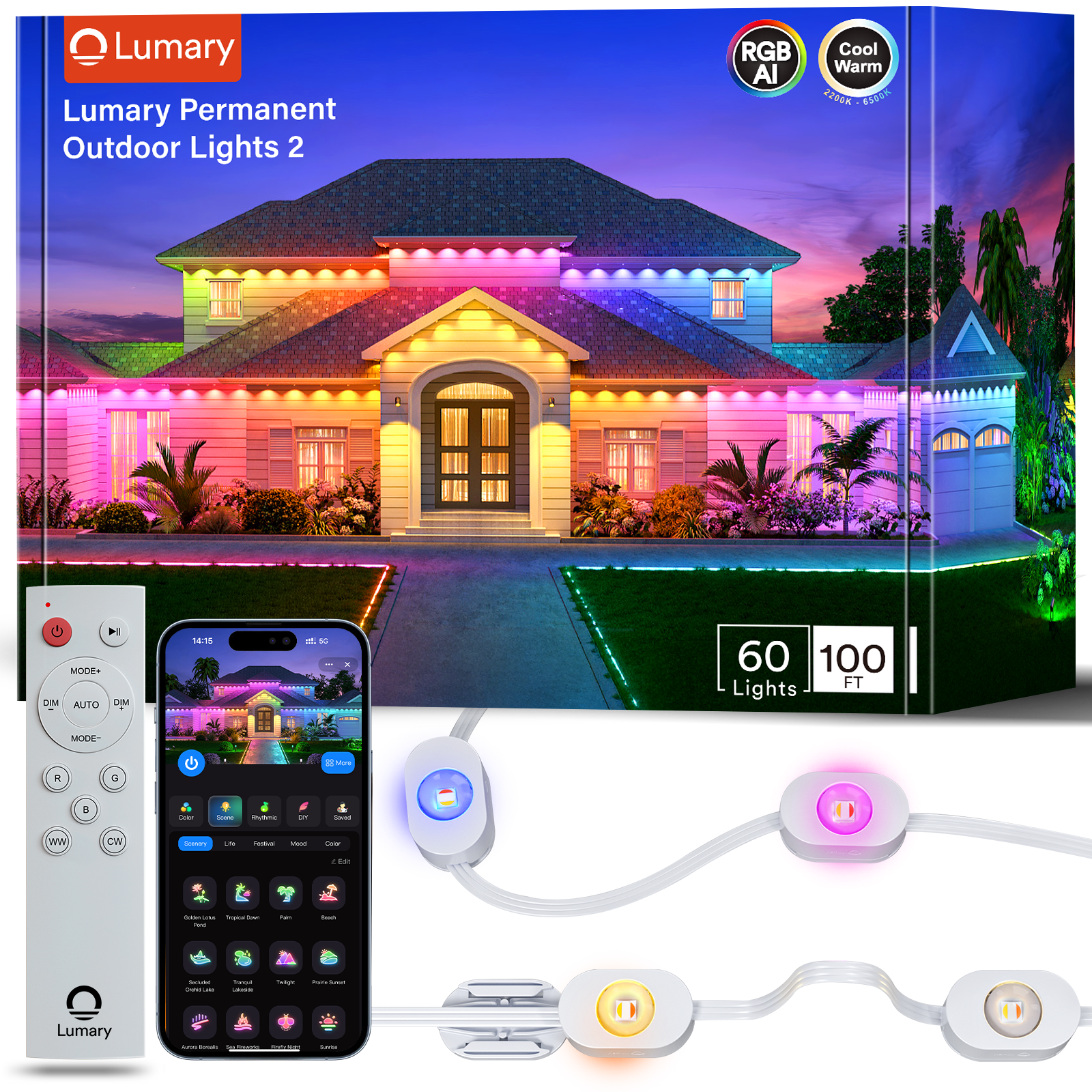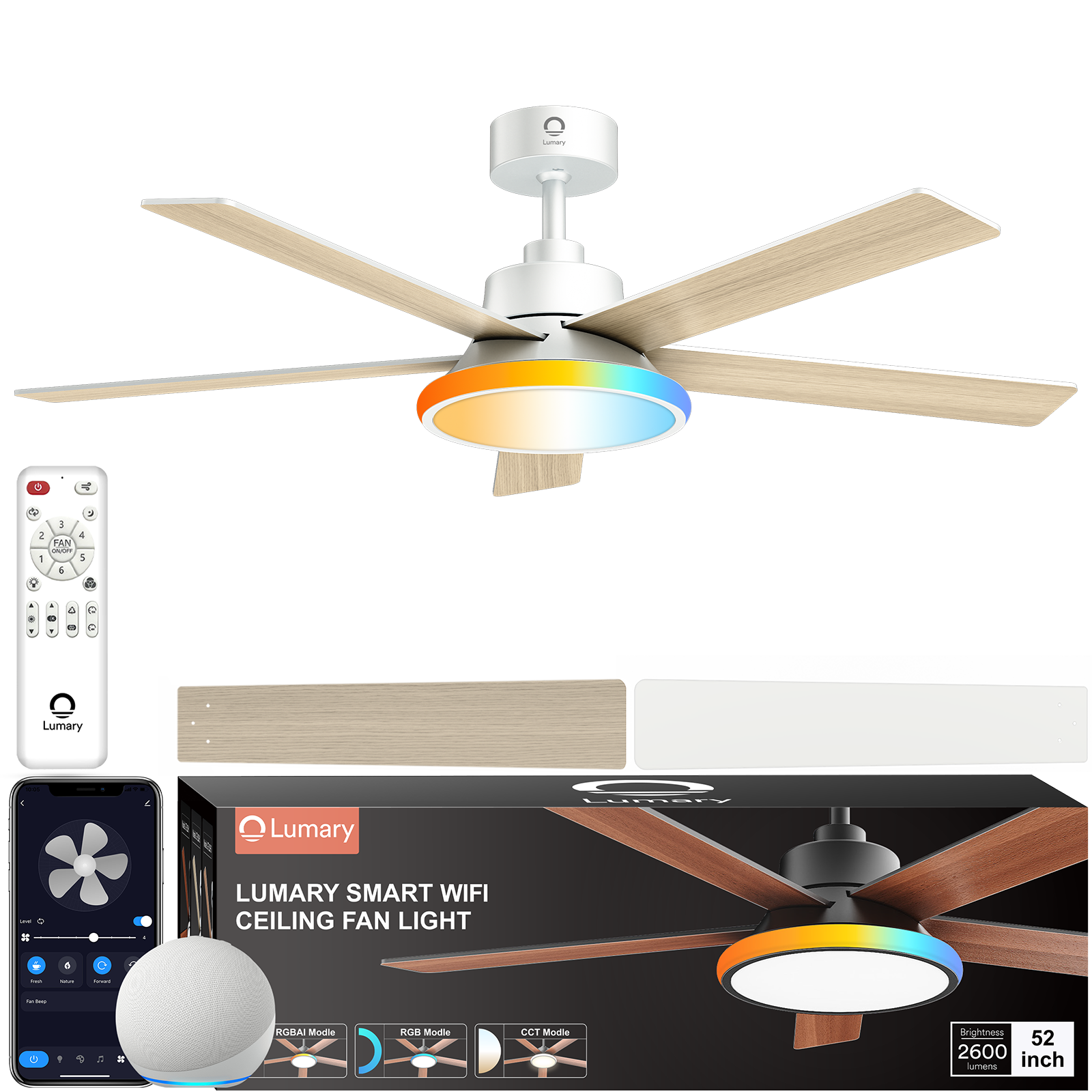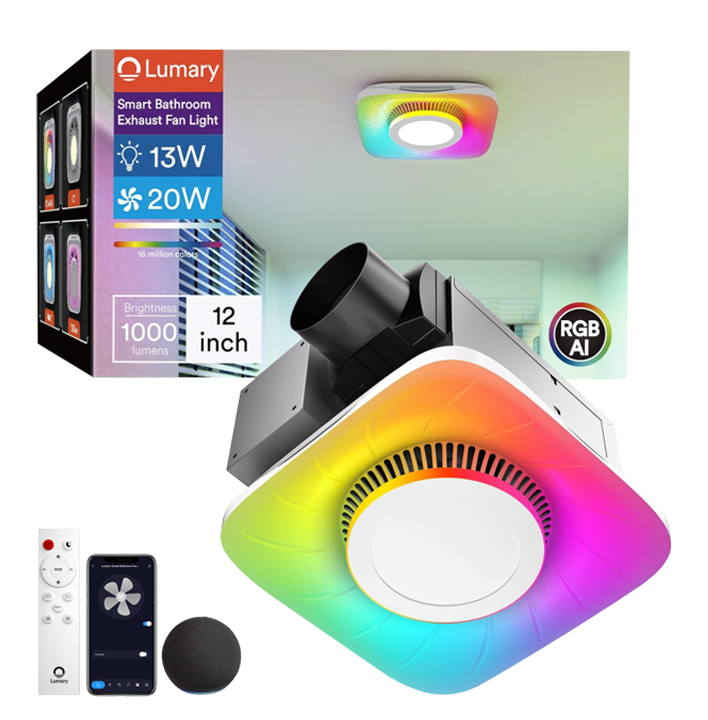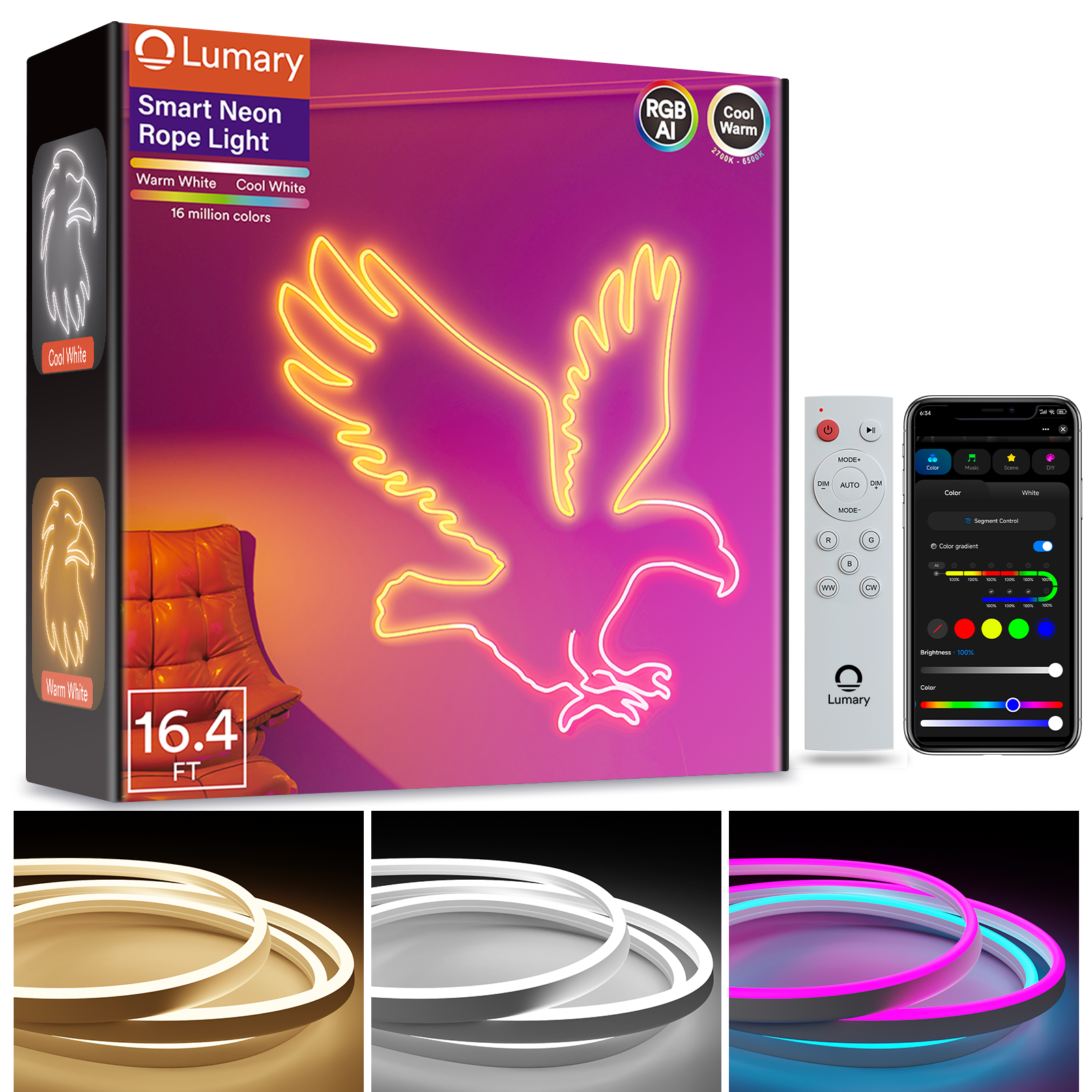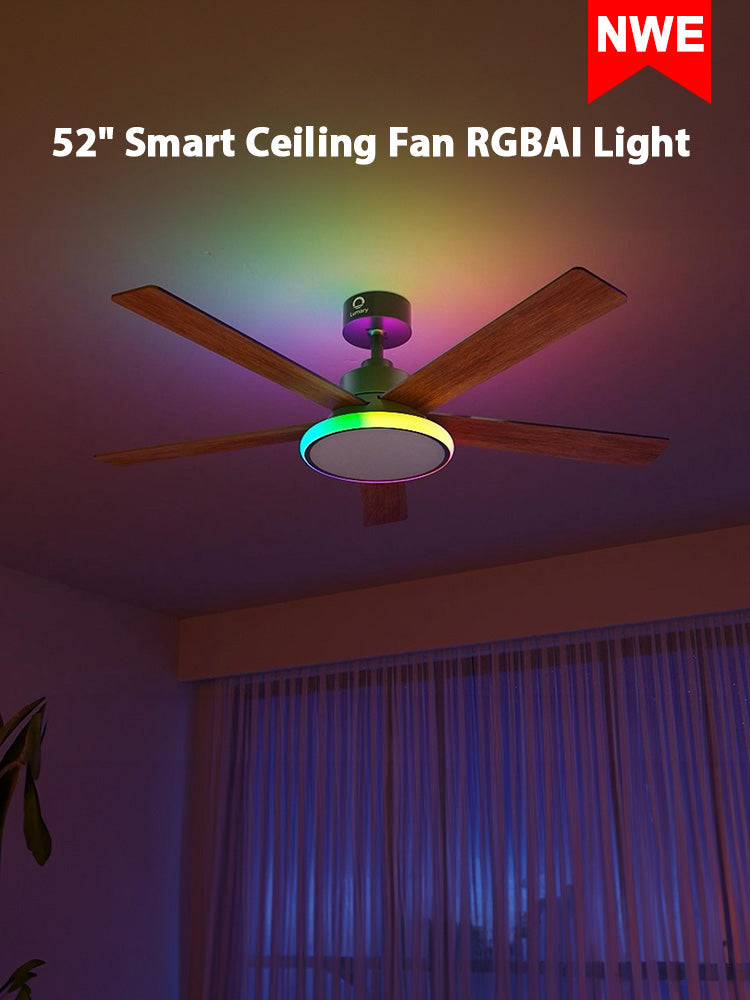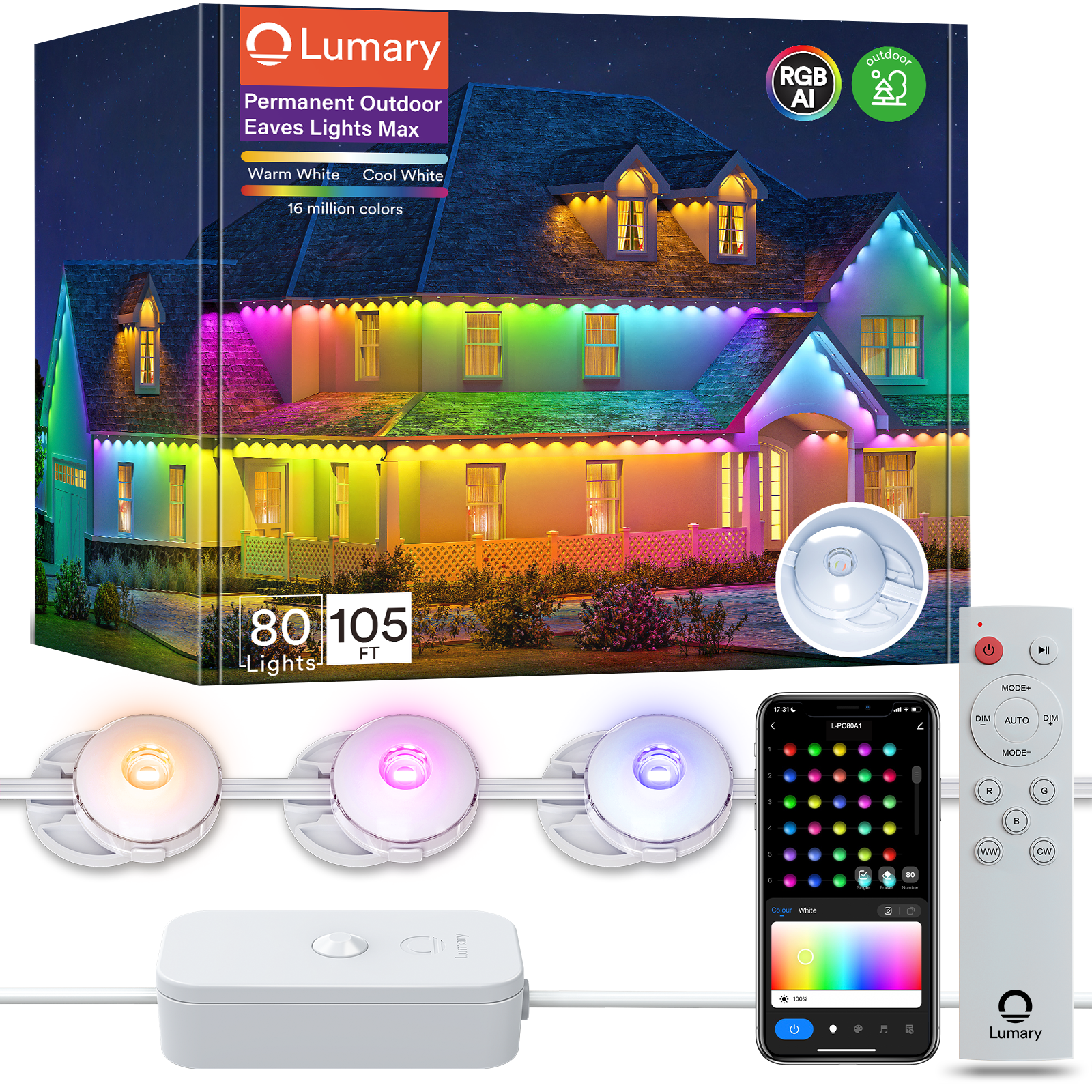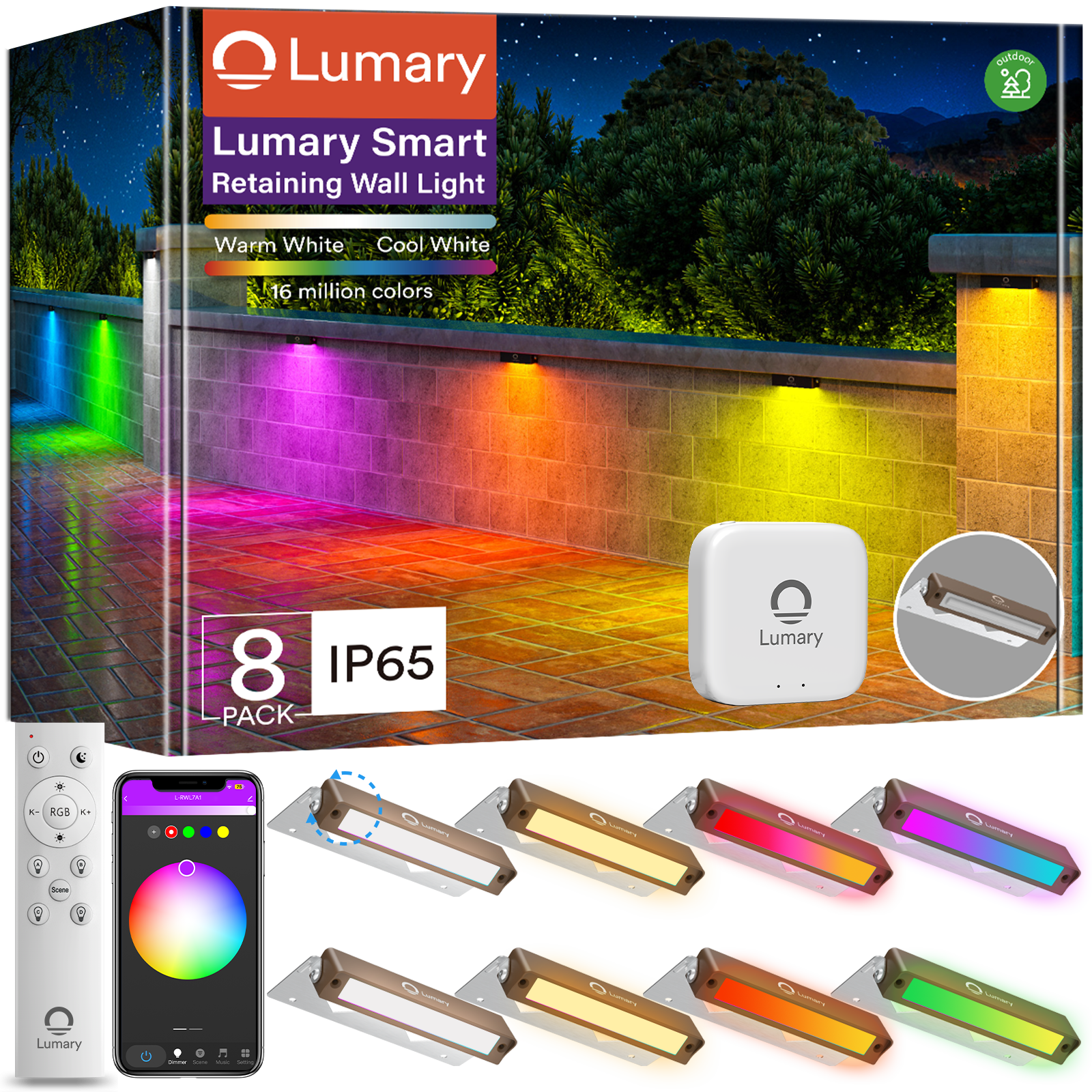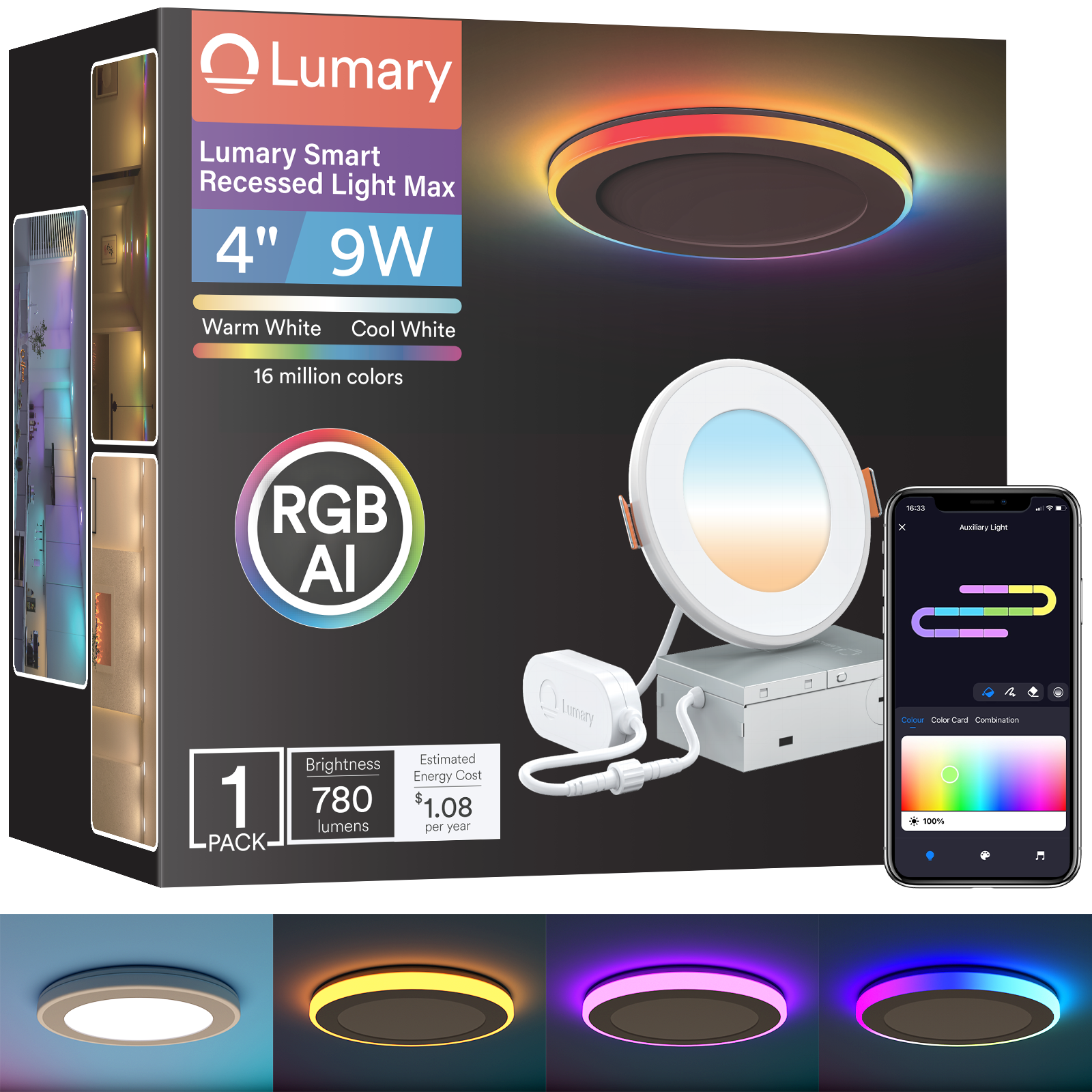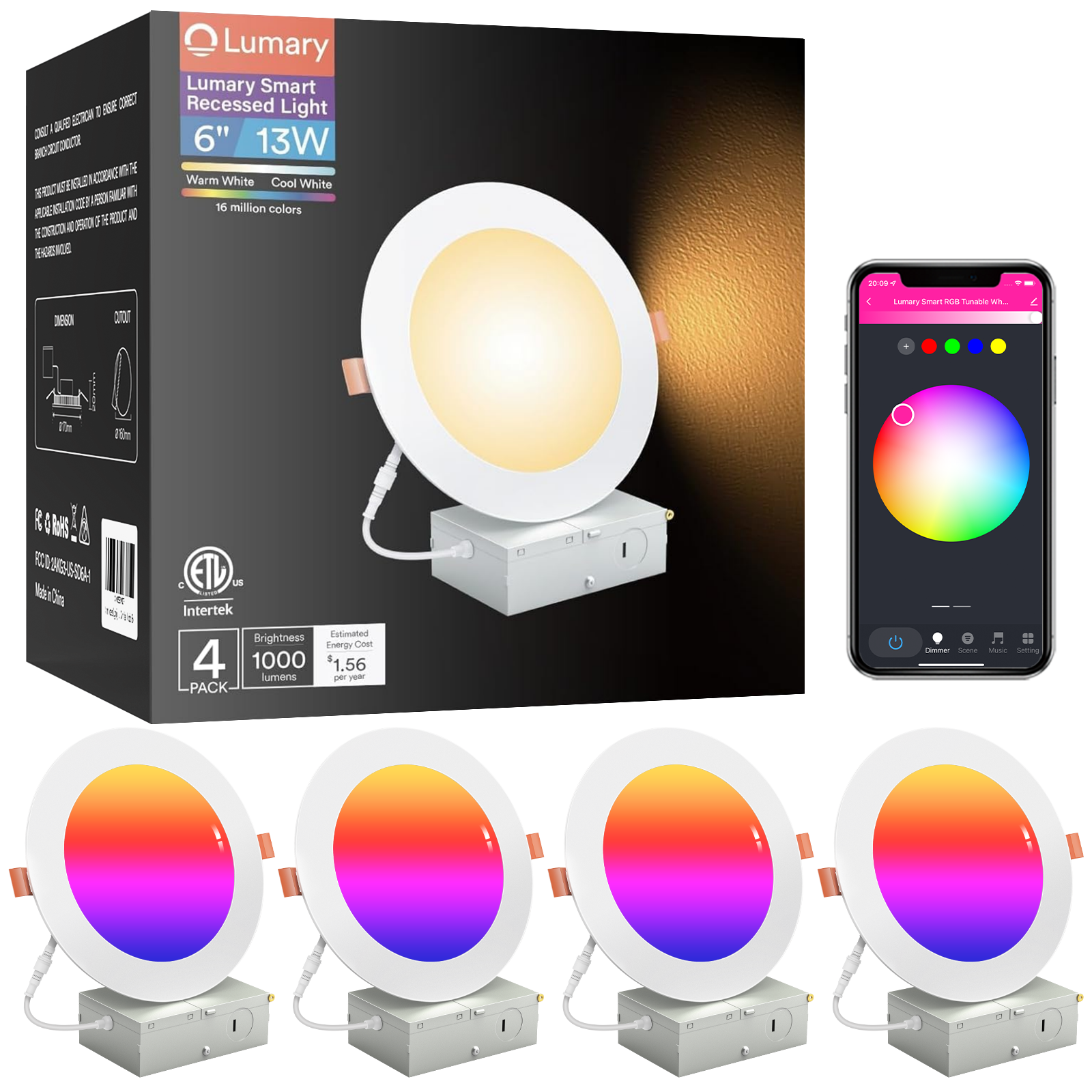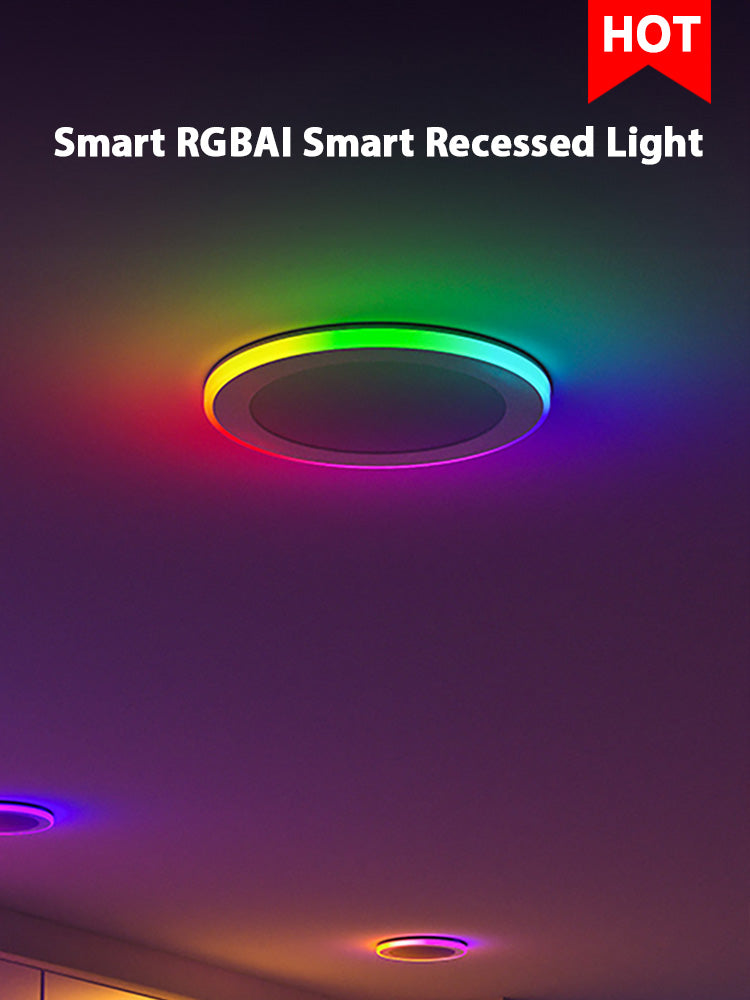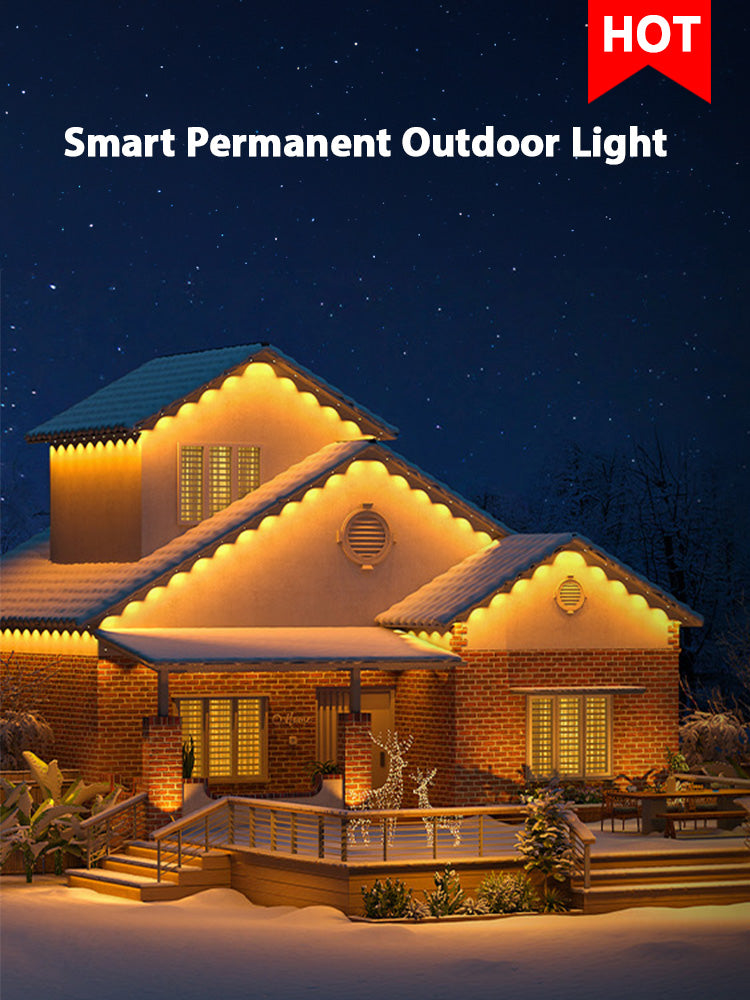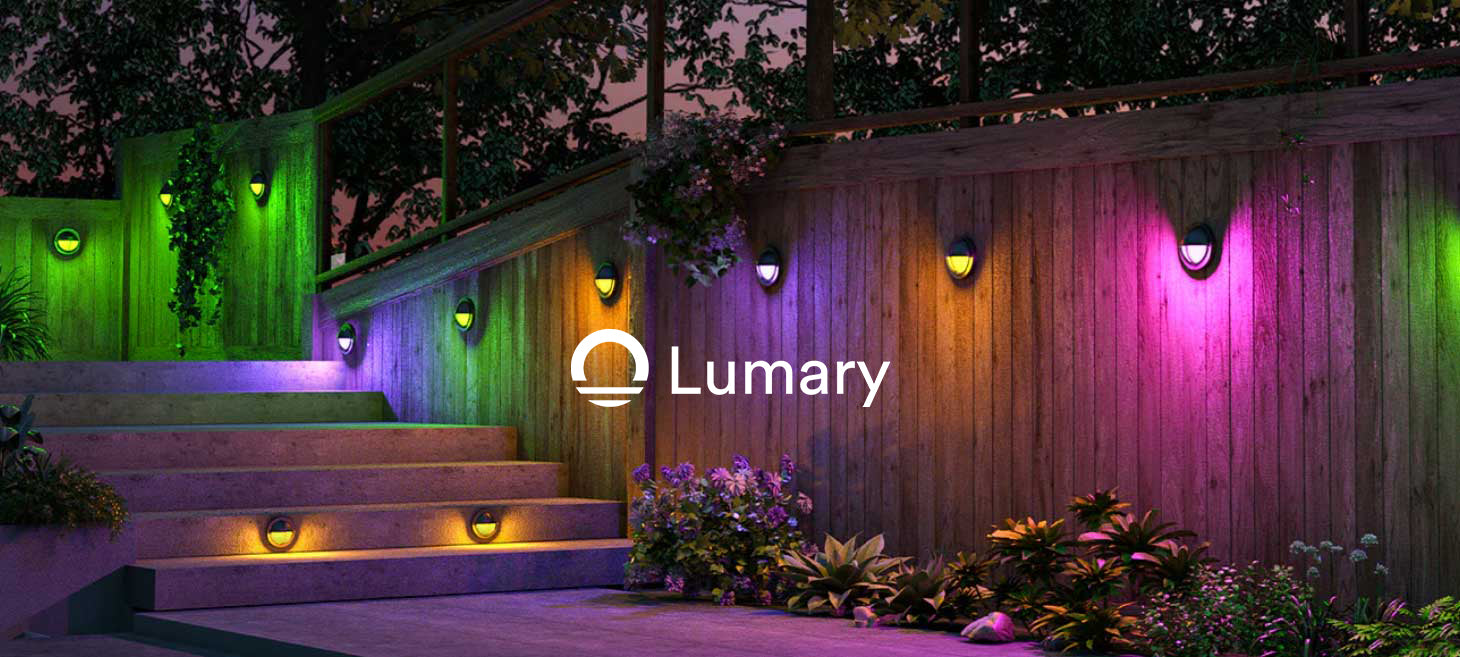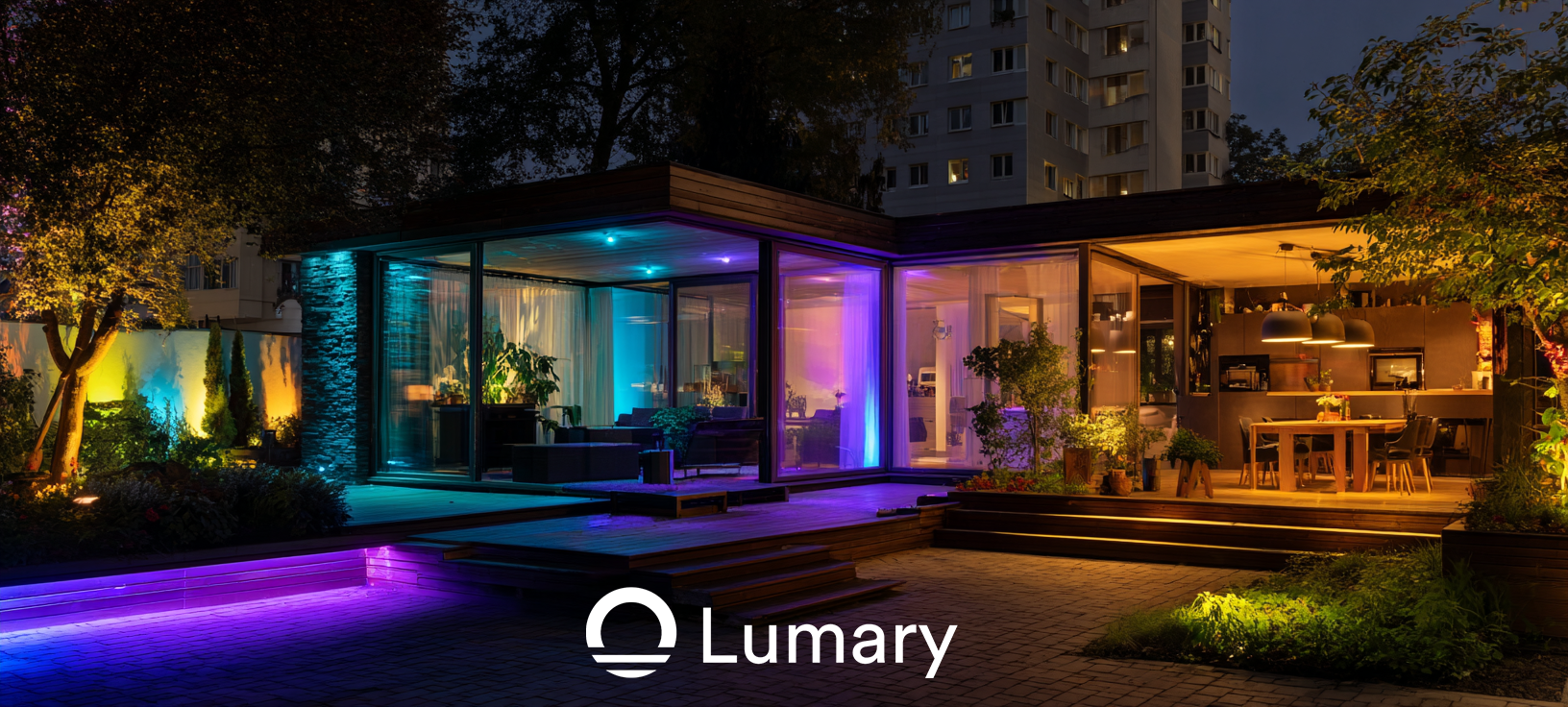Choosing the right colored lights for your home can transform your living space into a haven of comfort and style. The right lighting not only enhances the ambiance but also influences your mood and the room's appearance. Imagine walking into a room bathed in warm, inviting light that creates a comfortable ambiance. Red lights can elevate feelings of excitement, while blue lights might calm you down. Yellow lights can soothe irritated feelings, creating a peaceful atmosphere. By selecting the perfect lighting, you can craft an atmosphere that suits your lifestyle and preferences.
Key Takeaways

-
Understand color temperature: Choose warm lights (2000K-3000K) for relaxation and cool lights (4000K and above) for productivity.
-
Tailor lighting to room function: Use ambient lighting for comfort, task lighting for specific activities, and accent lighting to highlight features.
-
Experiment with colored lights: Different colors can influence mood; use them to create the desired atmosphere in each room.
-
Combine lighting types: Achieve a balanced scheme by integrating ambient, task, and accent lighting for both functionality and aesthetics.
-
Adjust lighting throughout the day: Use brighter, cooler lights in the morning and switch to warmer tones in the evening for a cozy feel.
-
Personalize your choices: Reflect your style and needs by selecting fixtures and colors that resonate with your lifestyle.
-
Embrace LED versatility: Opt for energy-efficient LED lights that offer a range of colors and styles to enhance your home's ambiance.
Understanding Color Temperature
When you think about lighting, color temperature might not be the first thing that comes to mind. However, it's a crucial factor in creating the right ambiance in your home. Color temperature, measured in Kelvin (K), tells you whether the light will feel warm and cozy or cool and energizing. Lower temperatures, like those in the soft white range of 2000K to 3000K, emit a warm glow. This type of lighting is perfect for spaces where you want to relax, like the living room or bedroom. On the other hand, higher temperatures, above 4000K, produce cooler tones that are great for workspaces and kitchens, where focus and productivity are key.
The Kelvin Scale Explained
The Kelvin scale is your guide to understanding how light color affects your space. Imagine it as a spectrum where each point represents a different mood or function. At the lower end, around 2000K, you find warm, candle-like light. As you move up the scale, the light becomes more neutral and then cool. For instance, a 3500K light offers a balanced feel, suitable for various settings. Knowing where your lighting falls on this scale helps you choose the best lighting for each room in your home.
Choosing the Right Temperature for Your Home
Selecting the right color temperature depends on the room's purpose and your personal preference. In the living room, you might prefer a warm, inviting light that encourages relaxation. Bedrooms benefit from similar warmth, promoting restfulness. Kitchens and offices, however, often require cooler lighting to enhance alertness and efficiency. By understanding these needs, you can tailor your lighting choices to fit each space perfectly. Remember, the right lighting can transform your home into a place that not only looks good but also feels right.
Room-Specific Recommendations for the Best Lighting for Your Home
Choosing the right lighting configuration for key rooms in your home can make a big difference in both functionality and ambiance. Let's explore some tailored lighting solutions for different spaces.
Living Room Lighting
Your living room is often the heart of your home, where you entertain guests or relax with family. To create a warm and inviting atmosphere, consider using a combination of ambient and accent lighting. Pendant lights can add a touch of elegance and serve as a focal point. For a cozy feel, incorporate ambient lighting fixtures like ceiling lights or floor lamps. These provide a comfortable level of light that fills the room without being too harsh. You might also want to add some task lighting with table lamps for reading or other activities.
Kitchen Lighting
In the kitchen, proper lighting is essential for both safety and efficiency. LED downlights are a great choice here, offering bright and even illumination. Aim for a total brightness of 4,000-8,000 lumens with a color temperature between 2700-5000K. This range provides the clarity needed for cooking and food preparation. Task lighting is also crucial; consider installing under-cabinet lights to illuminate countertops. Pendant lights can be used over islands or dining areas to add style and focus light where it's needed most.
Bathroom Lighting
Bathrooms require a mix of functional and flattering lighting. Start with ambient lighting from ceiling fixtures to ensure the space is well-lit. For tasks like shaving or applying makeup, task lighting around mirrors is essential. Wall sconces on either side of the mirror can reduce shadows and provide even lighting. Consider using bulbs with a higher CRI (Color Rendering Index) to ensure colors appear natural and vibrant. This setup not only enhances visibility but also creates a spa-like atmosphere.
By selecting the best lighting for your home, you can enhance each room's functionality and aesthetic appeal. Remember, the right lighting can transform your space into a more enjoyable and efficient environment.
Bedroom Lighting
Your bedroom serves as a sanctuary for rest and relaxation. The right lighting can transform it into a cozy retreat. Start with ambient lighting to provide a soft, overall glow. Ceiling lights or wall sconces work well for this purpose. They create a warm and inviting atmosphere, perfect for winding down after a long day.
For reading or other activities, consider adding task lighting. Table lamps on nightstands offer focused light where you need it most. Choose lamps with adjustable brightness to suit your mood and activities. You might also explore dimmable LED fixtures, which allow you to control the light intensity and create the perfect ambiance for any occasion.
To add a touch of style, incorporate decorative elements like pendant lights or unique lamp designs. These not only enhance the room's aesthetic but also provide additional layers of light. Remember, your bedroom lighting should reflect your personal style while promoting relaxation and comfort.
Office Lighting
In your home office, lighting plays a crucial role in boosting productivity and focus. Start with ambient lighting to ensure the space is well-lit. Overhead fixtures like ceiling lights provide a balanced level of illumination, reducing eye strain during long work hours.
Task lighting is essential for specific work areas. Desk lamps with adjustable arms and brightness settings offer flexibility and precision. They help illuminate your workspace, making it easier to concentrate on tasks. Consider LED desk lamps, which are energy-efficient and provide clear, bright light.
Modern office trends emphasize the importance of adjustable lighting solutions. Dimmable LED fixtures allow you to tailor the lighting to your needs, whether you're working on detailed tasks or participating in virtual meetings. This adaptability ensures that your office remains a comfortable and efficient environment.
By selecting the right lighting for your bedroom and office, you can create spaces that are both functional and inviting. Whether you're unwinding in your bedroom or tackling projects in your office, the right lighting makes all the difference.
Types of Lighting in Home Lighting
When it comes to home lighting, understanding the different types of lighting can help you create the perfect atmosphere in each room. Let's dive into the three main types: ambient lighting, task lighting, and accent lighting.
Ambient Lighting
Ambient lighting serves as the primary source of light in a room. It provides a comfortable level of brightness without causing glare, allowing you to see and move around safely. Think of it as the foundation of your lighting scheme. You can achieve ambient lighting through various fixtures like ceiling lights, chandeliers, or wall-mounted fixtures. In living rooms, ambient lighting sets a warm and inviting tone, while in kitchens, it ensures the space is well-lit for daily activities.
To enhance the ambiance, consider using color LED lighting. These lights offer a range of colors and intensities, allowing you to customize the mood of your space. Whether you want a soft glow for relaxation or a vibrant hue for a party, color LED lighting can adapt to your needs.
Task Lighting

Task lighting focuses on specific areas where you need more light for activities like reading, cooking, or working. It's all about functionality. In the kitchen, under-cabinet lighting or pendant lights increase visibility on countertops, making food preparation easier. In living areas and bedrooms, table and floor lamps provide useful task lighting, reinforcing the room's design style. For home offices, desk lamps and under-cabinet lights offer focused illumination, helping you concentrate on your work.
Task lighting not only enhances functionality but also complements the overall design of your space. By choosing fixtures that match your decor, you can create a cohesive look that blends style with practicality.
Accent Lighting
Accent lighting adds drama and style to your home by highlighting specific features or areas. It draws attention to details like artwork, architectural elements, or decorative objects. This type of lighting is ideal for living rooms, dining areas, and bedrooms, where you want to create an elevated mood. Accent lighting tends to be bright but focused, illuminating smaller areas to create visual interest.
Using color LED lighting for accent lighting can enhance its effect. With a wide range of colors available, you can highlight features in a way that complements your decor. Whether you're showcasing a piece of art or adding depth to a room, accent lighting helps you achieve a sophisticated look.
By understanding these types of lighting, you can create a balanced and inviting atmosphere in your home. Each type plays a unique role, contributing to the overall ambiance and functionality of your space.
Balancing Lighting Schemes to Choose the Right Lights
Creating the perfect lighting scheme in your home involves more than just picking a few light fixtures. You need to think about how different types of lighting work together to create a harmonious environment. By balancing ambient, task, and accent lighting, you can achieve a well-lit space that meets all your needs.
Combining Different Types of Lighting
To create a balanced lighting scheme, you should combine ambient, task, and accent lighting. Each type serves a unique purpose and contributes to the overall feel of a room.
-
Ambient Lighting: This is your main source of light. It provides a comfortable level of brightness and sets the mood for the entire space. Think of ceiling lights or chandeliers that fill the room with light.
-
Task Lighting: This type of lighting focuses on specific areas where you need more light for activities like reading or cooking. Desk lamps or under-cabinet lights are great examples. They provide brighter light than ambient lighting, making tasks easier to perform.
-
Accent Lighting: Use this to highlight features like artwork or architectural details. It adds drama and style to your space. Accent lighting is typically brighter than ambient lighting but not as intense as task lighting.
By combining these three types, you can create a layered lighting effect that enhances both functionality and aesthetics. For instance, in a living room, you might use ambient lighting to set a warm tone, task lighting for reading corners, and accent lighting to showcase a beautiful painting.
Adjusting for Different Times of Day
Lighting needs change throughout the day. In the morning, you might want brighter, cooler light to help you wake up and start your day. As the day progresses, you can adjust your lighting to suit your activities and mood.
-
Morning: Use cooler, brighter lights to energize your space. This helps you feel alert and ready to tackle the day.
-
Afternoon: Natural light is often at its peak. You might not need as much artificial lighting, so consider dimming your lights or using sheer curtains to let in sunlight.
-
Evening: As the sun sets, switch to warmer, softer lighting. This creates a cozy atmosphere perfect for relaxation or entertaining guests.
With selectable color lighting, you can easily adjust the color and intensity of your lights to match the time of day. This flexibility allows you to maintain the perfect ambiance no matter the hour.
By understanding how to balance different lighting types and adjust them for various times of day, you can choose the right lights that enhance your home's atmosphere and functionality.
Personalizing Your Lighting Choices with the Best LED Lighting
Choosing the right lighting for your home goes beyond just picking a bulb. It's about creating an environment that reflects your personality and meets your daily needs. With the best LED lighting, you can customize your space to suit your lifestyle and preferences.
Considering Your Lifestyle and Needs
When selecting lighting, think about how you use each room. Do you need bright lights for working or softer tones for relaxing? Your lifestyle plays a big role in determining the best lighting choices. For instance, if you love reading in bed, consider adding task lighting like adjustable bedside lamps. These provide focused light without disturbing others.
In spaces where you entertain guests, ambient lighting sets the mood. You might choose dimmable ceiling lights or chandeliers to create a warm and inviting atmosphere. For those who work from home, task lighting in your office can boost productivity. Desk lamps with adjustable brightness help you concentrate on tasks without straining your eyes.
"Reasonable lighting design can regulate emotions and improve comfort in a space."
By understanding your needs, you can tailor your lighting to enhance both functionality and comfort.
Experimenting with Colors and Styles
Lighting isn't just about function; it's also a chance to express your style. Experimenting with different colors and styles can transform your home into a unique reflection of your taste. Colored lights, for example, can dramatically change the mood of a room. Red lights might energize a space, while blue lights can create a calming effect.
Consider using color-changing LED bulbs to add versatility to your lighting scheme. These allow you to switch between colors depending on your mood or the occasion. Hosting a party? Opt for vibrant hues to energize the atmosphere. Looking to unwind? Choose softer, warmer tones for a cozy feel.
"Different colors of light have a significant effect on mood and impressions."
Don't be afraid to mix and match lighting styles. Combine modern fixtures with vintage lamps for an eclectic look. Or, use pendant lights to add a touch of elegance to your dining area. The key is to find a balance that complements your home's decor while meeting your lighting needs.
By personalizing your lighting choices, you can create a space that not only looks great but also feels right for you. Whether you're focusing on functionality or style, the best LED lighting offers endless possibilities for customization.
Selecting the perfect colored lights for your home can transform each room into a unique haven. By understanding color temperature and the specific needs of each space, you can create an environment that suits your lifestyle. Whether it's the warm glow in your living room or the energizing light in your kitchen, the right choice enhances both mood and functionality. Remember, your personal preferences play a crucial role. Embrace the versatility of LED lighting to experiment with colors and styles. Let your home reflect your personality through thoughtful lighting choices.
FAQ
What is color temperature, and why does it matter?
Color temperature measures the hue of a light source, expressed in Kelvin (K). It affects how a room feels. Warm lights (2000K-3000K) create cozy atmospheres, while cool lights (4000K and above) enhance focus. Understanding this helps you choose the right lighting for each room.
How do colored lights impact mood?
Colored lights can influence your emotions. For example, blue lights calm you, while red lights energize. Using different colors in your home can create specific atmospheres, enhancing your emotional experiences. This makes colored lighting a powerful tool for mood regulation.
Can I use colored lights in every room?
Yes, you can use colored lights in any room. However, consider the room's purpose. In bedrooms, softer tones promote relaxation. In workspaces, cooler lights boost productivity. Tailor your lighting choices to fit the function and mood you want to achieve.
What are the benefits of LED lighting?
LED lighting offers several advantages. It's energy-efficient, long-lasting, and versatile. You can find LED lights in various colors and styles, allowing you to customize your home's ambiance. Plus, they provide consistent brightness and color quality, enhancing your space's overall look.
How do I balance different types of lighting in a room?
To balance lighting, combine ambient, task, and accent lighting. Ambient lighting sets the room's overall tone. Task lighting focuses on specific areas for activities. Accent lighting highlights features like artwork. Together, they create a harmonious and functional environment.
Is it possible to change lighting throughout the day?
Yes, you can adjust lighting to match different times of day. Use brighter, cooler lights in the morning to energize your space. As the day progresses, switch to warmer, softer lighting for relaxation. Selectable color lighting makes these adjustments easy and effective.
How do I choose the right lighting for my lifestyle?
Consider how you use each room. Do you need bright lights for working or softer tones for relaxing? Your lifestyle guides your lighting choices. For instance, if you enjoy reading, add task lighting like adjustable lamps. Tailor your lighting to enhance both functionality and comfort.
Can colored lights be used for decorative purposes?
Absolutely! Colored lights add style and personality to your home. Experiment with different colors to create unique atmospheres. Use color-changing LED bulbs for versatility. Whether you're hosting a party or unwinding, colored lights can transform your space.
What should I consider when selecting lighting fixtures?
Think about the room's design and your personal style. Choose fixtures that complement your decor. Consider the type of lighting you need—ambient, task, or accent. Also, look for energy-efficient options like LED lights to save on energy costs and reduce environmental impact.
How do I ensure my lighting choices are sustainable?
Opt for energy-efficient lighting solutions like LED bulbs. They consume less power and last longer than traditional bulbs. Look for ENERGY STAR certified options to ensure quality and sustainability. By choosing eco-friendly lighting, you contribute to a greener environment.

